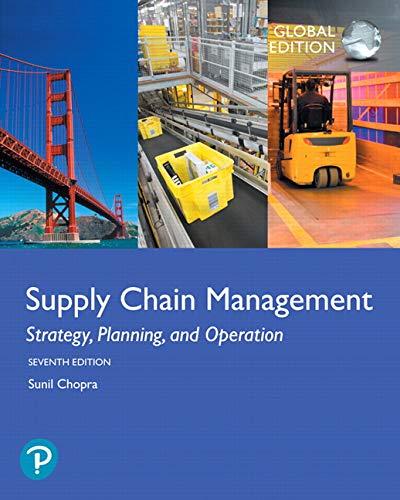The Knitting Company (TKC) is planning production for its four sweater styles that are popular during Christmas.
Question:
a. How many sweaters of each type should TKC manufacture?
b. What is the expected profit from this policy?
c. How many sweaters does TKC expect to sell at a discount?
d. TKC is considering the postponement of knitting and using flexible machines. This will require the base sweaters to be made in advance (identical for each of the four types) and the final patterns to be knit later. This will increase production cost per sweater to $21.40. How many sweaters should TKC manufacture with postponement? What is the expected profit from this policy?
e. Another option is to produce the popular style without postponement and the other three styles using postponement. What is the expected profit under this policy?
Step by Step Answer:

Supply Chain Management Strategy Planning And Operation
ISBN: 9781292257891
7th Global Edition
Authors: Sunil Chopra





